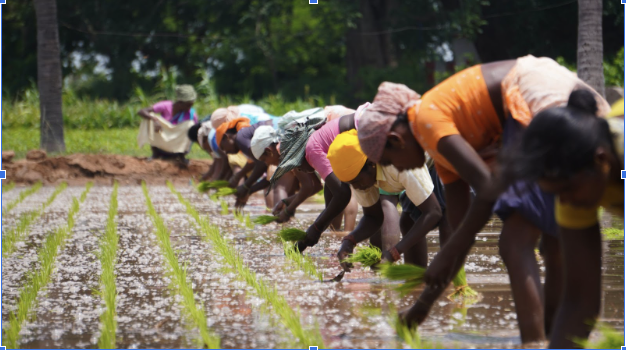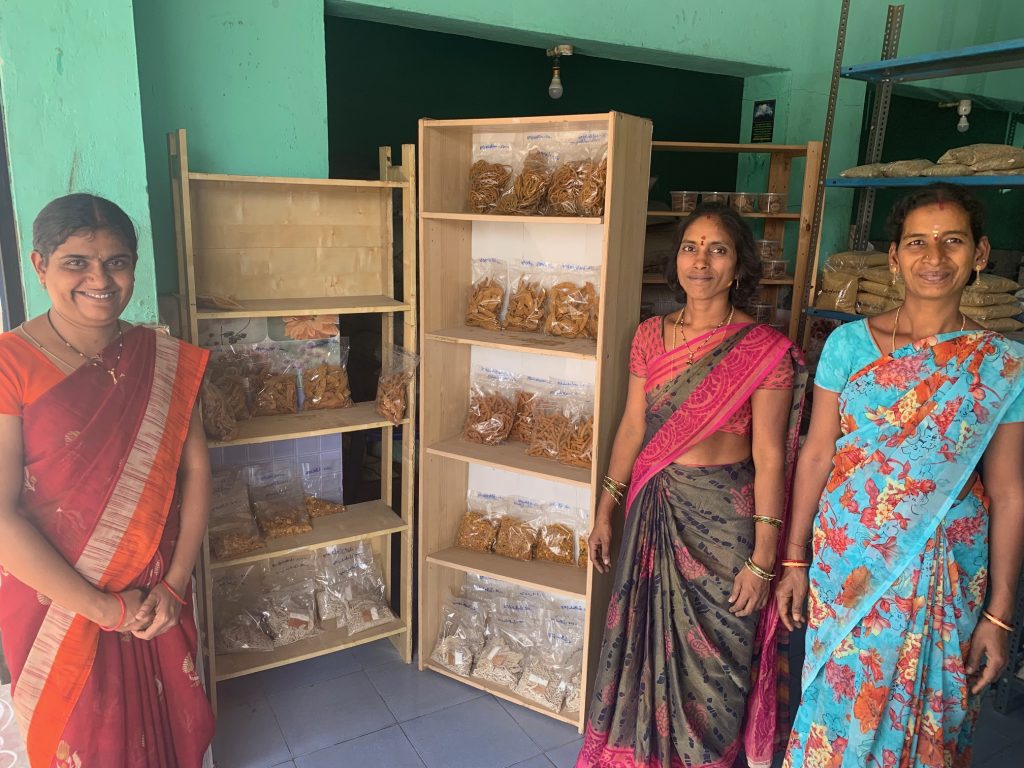From harvesting to sorting, our crops undergo a lot of change before reaching us as food. A lack of mechanisation at the farm level means much of this work is done manually

Farming in India involves back-breaking labour, much of which is done by women. Investments in contextual tools and equipment is needed to reduce this drudgery. Photo: Unsplash/Deepak Kumar
Farm-to-fork is a marvellous idea.
What’s not to like about cultivating one’s own food and having a stable supply of fresh, healthy and aromatic ingredients at the snap of a twig! While this works for fruits, vegetables, herbs and greens, it fails to apply to the anaj we eat. This is because grains and cereals need to be processed after being harvested. Little do we realise that this processing involves multiple steps, all of which are labour-intensive activities largely undertaken by women.
This is antithetical to the image we tend to have of farmers: worn, middle-aged men toiling away under a baking sun. This is a myth. Farming in India is a female-dominated industry. Nearly 63% workers in agriculture are women. In fact, in the production of major crops, participation of women is as high as 75% according to the Indian Council of Agricultural Research (ICAR). Much of this agricultural work entails toiling away for hours in threshing (separating the grain from the straw/stalks), hulling and dehusking (removing the covering or coating of grain/cereal), cleaning (removing undesirable material such as specks and pebbles), grading, polishing, milling into flour and storing. These tasks are often carried out in groups as a communal activity. Women have turned to verse to alleviate the drudgery and to vent about the back-breaking work. Listen to Savitra Ubhe as she sings:
दळता कांडता, चोळी भिजूनी पदर वला, चोळी भिजूनी पदर वला, निवत्या दुधाला कढं आला
(Grinding, pounding grain, my blouse is drenched and sari pallu is wet. My blouse is drenched and sari pallu is wet, like cool milk heated to boil); this is one of the many verses about farm labour that are part of the grindmill songs project.
Tools and machines do exist to ease these tasks. Modern agriculture is large-scale production centric. In the developed world, vast tracts of farmlands are managed by a handful of people thanks to mechanised equipment such as seed planters, manure handlers, sprayers, combined harvesters and so on. These machines and equipment are viable and relevant for large land-holdings, which is not the case in our country. The average landholding for Indian farmers ranges from 1 to 3 acres, and hence they require an altogether different set of tools and equipment.
While our farmers have invested in tractors thanks to the Green Revolution, we need to pay serious and significant attention to contextualise farm mechanisation to the Indian reality. Our farm machinery sector is a mere 0.6% of the overall manufacturing sector. Tractors occupy 70% of this share. Nearly 4.4% agricultural households own tractors and 5.3% cultivator households own one of the following non-tractor farm equipment: power tillers/power-driven ploughs, crop harvesters, threshers, other power-driven machinery and laser land leveller.
[WATCH: Unlike bulk/industrial threshers, this thresher caters to the needs of farmers with yields of smaller quantities]
A lack of R&D in equipment and machinery, need for crop-specific, operation-specific and region-specific machines, lack of reliable electricity supply in farmlands, and sometimes even a lack of transportation infrastructure are factors that have contributed to a lack of farm mechanisation, and the persistence of manual farm labour. This is leading to awkward and debilitating consequences for farmers in many regions: they are having to turn to the markets and pay a premium to procure food for self-consumption… ironically often including the very crops that they cultivate. This is true in large parts for farmers growing paddy, who end up buying rice from the PDS or those cultivating sugarcane buying sugar from the market and those growing millets having to travel long distances to process them.
Second-order effects of lack of on-farm or near-farm processing facilities include loss of nutritious cattle fodder, over-polishing of grains and to a certain extent, stubble burning, which exacerbates air pollution.

The retail store of Manyam Grains, a women-operated social enterprise that procures, processes and markets naturally grown millets in Thummapala Village, Visakhapatnam, Andhra Pradesh. Photo: Rainmatter Foundation
These are compelling reasons to focus on eliminating and reducing drudgery in farm activities. Stakeholders, be they farmers’ groups, innovators, funders and Agtech companies, academic institutions and students, as well as government administrators must align to promote contextual tools and equipment for cultivation, harvest and post-harvest processing. The contours of such innovation and investment should account for the ground reality of the small farmer for maximum payoff. Some of the factors to be mindful of are (i) size of land holding, (ii) easy-to-operate and women-friendly machines (iii) convenience of repair with easy availability of replacement parts, (iv) power efficient and (v) replicable for multiple contexts.
This kind of value chain development is something that even champion farmers have been seeking. Only if we take baby steps in this direction today, will we be closer to achieving some sort of farm-to-fork reality for farmers and rural residents tomorrow.
(With inputs from Vikas Hosoor and learnings from a field visit organised by WASSAN)

Nice article,
Regards,
https://dairyyantra.in